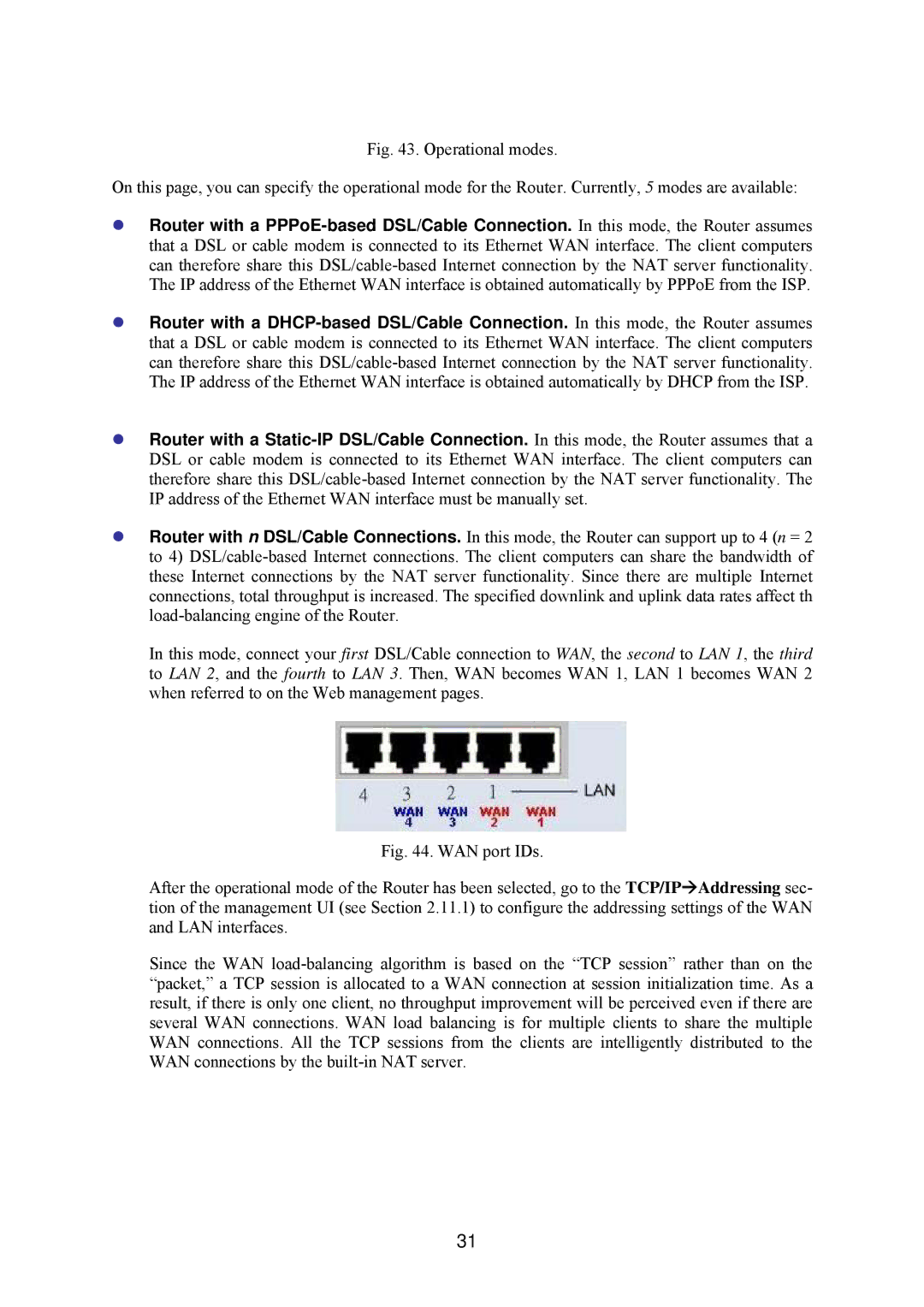
Fig. 43. Operational modes.
On this page, you can specify the operational mode for the Router. Currently, 5 modes are available:
zRouter with a PPPoE-based DSL/Cable Connection. In this mode, the Router assumes that a DSL or cable modem is connected to its Ethernet WAN interface. The client computers can therefore share this DSL/cable-based Internet connection by the NAT server functionality. The IP address of the Ethernet WAN interface is obtained automatically by PPPoE from the ISP.
zRouter with a DHCP-based DSL/Cable Connection. In this mode, the Router assumes that a DSL or cable modem is connected to its Ethernet WAN interface. The client computers can therefore share this DSL/cable-based Internet connection by the NAT server functionality. The IP address of the Ethernet WAN interface is obtained automatically by DHCP from the ISP.
zRouter with a Static-IP DSL/Cable Connection. In this mode, the Router assumes that a DSL or cable modem is connected to its Ethernet WAN interface. The client computers can therefore share this DSL/cable-based Internet connection by the NAT server functionality. The IP address of the Ethernet WAN interface must be manually set.
zRouter with n DSL/Cable Connections. In this mode, the Router can support up to 4 (n = 2 to 4) DSL/cable-based Internet connections. The client computers can share the bandwidth of these Internet connections by the NAT server functionality. Since there are multiple Internet connections, total throughput is increased. The specified downlink and uplink data rates affect th load-balancing engine of the Router.
In this mode, connect your first DSL/Cable connection to WAN, the second to LAN 1, the third to LAN 2, and the fourth to LAN 3. Then, WAN becomes WAN 1, LAN 1 becomes WAN 2 when referred to on the Web management pages.
Fig. 44. WAN port IDs.
After the operational mode of the Router has been selected, go to the TCP/IPÆAddressing sec- tion of the management UI (see Section 2.11.1) to configure the addressing settings of the WAN and LAN interfaces.
Since the WAN load-balancing algorithm is based on the “TCP session” rather than on the “packet,” a TCP session is allocated to a WAN connection at session initialization time. As a result, if there is only one client, no throughput improvement will be perceived even if there are several WAN connections. WAN load balancing is for multiple clients to share the multiple WAN connections. All the TCP sessions from the clients are intelligently distributed to the WAN connections by the built-in NAT server.
31
